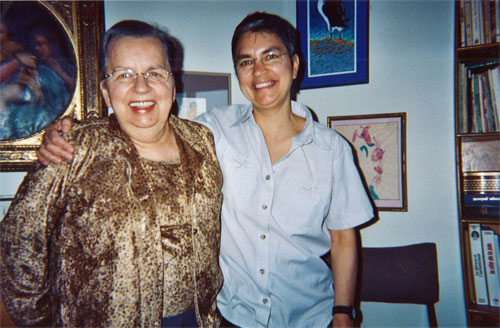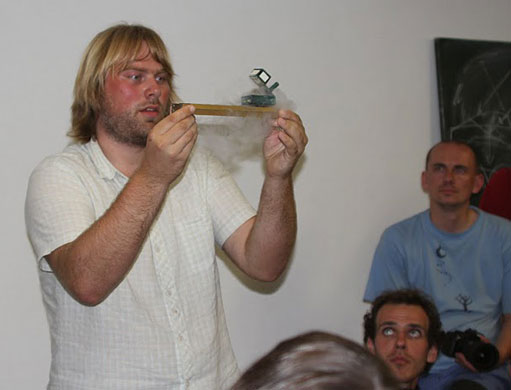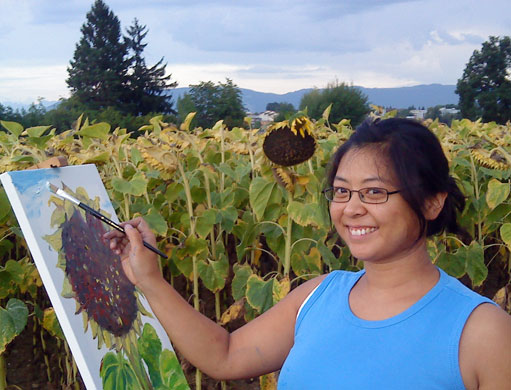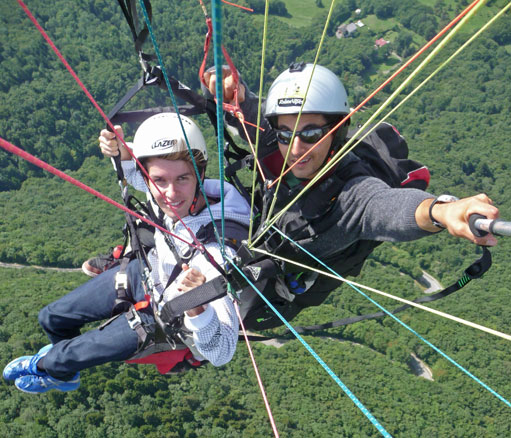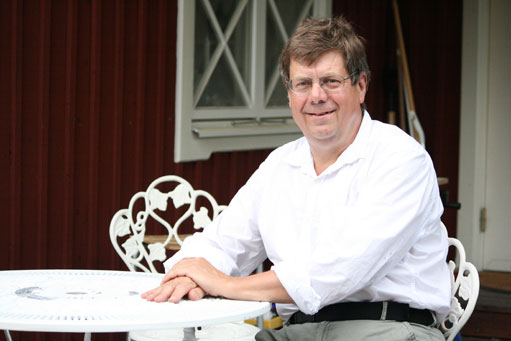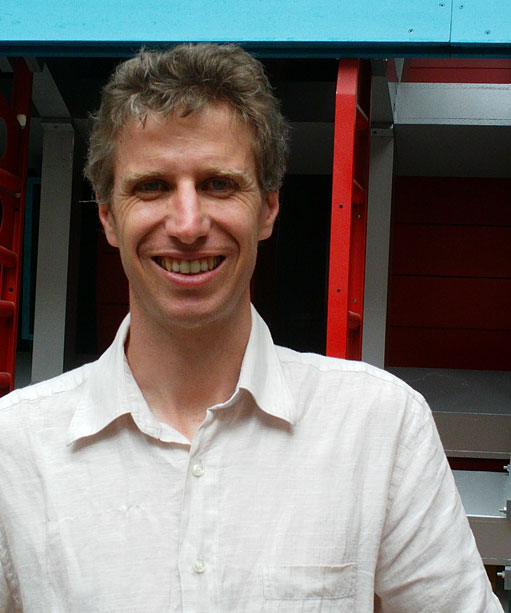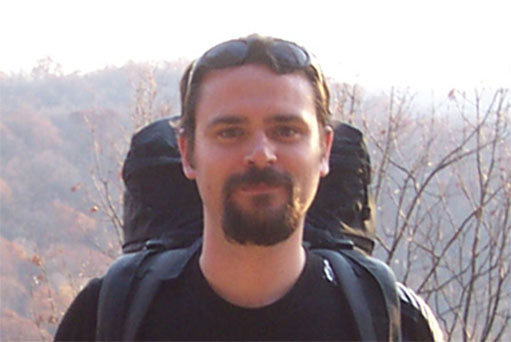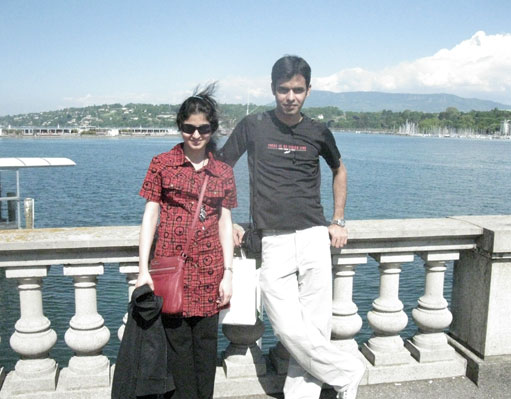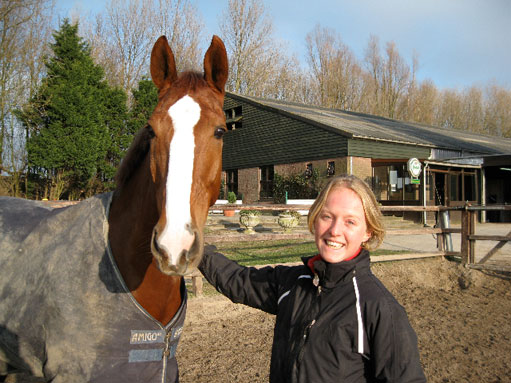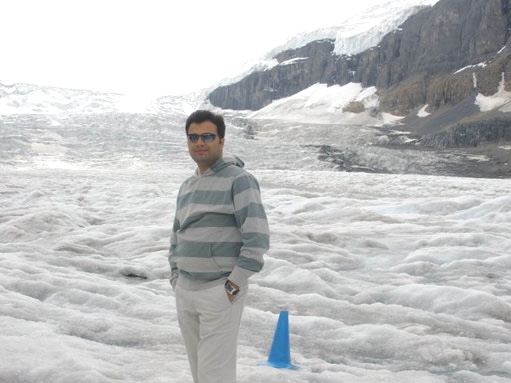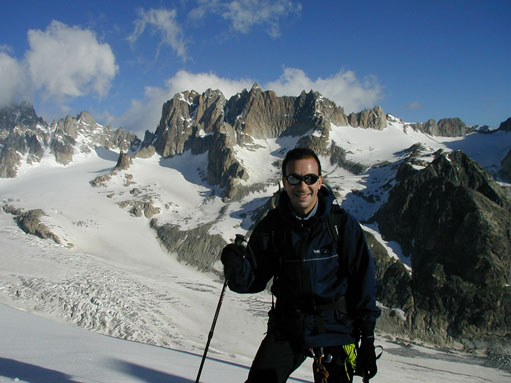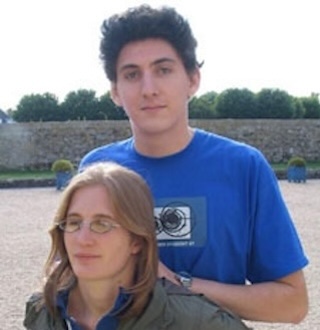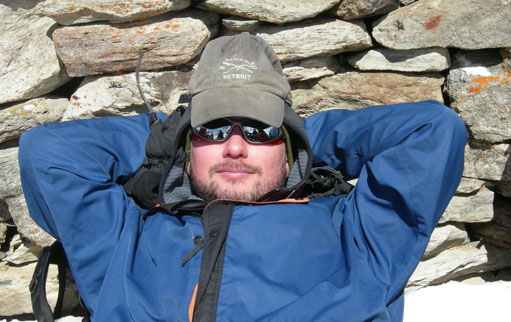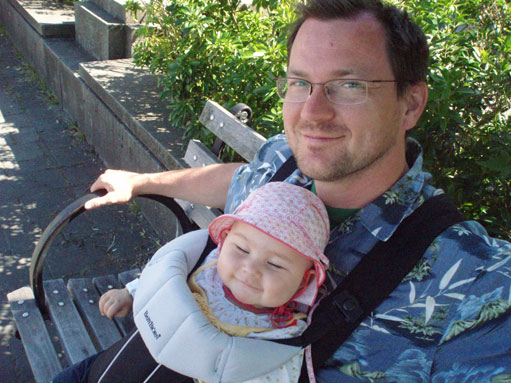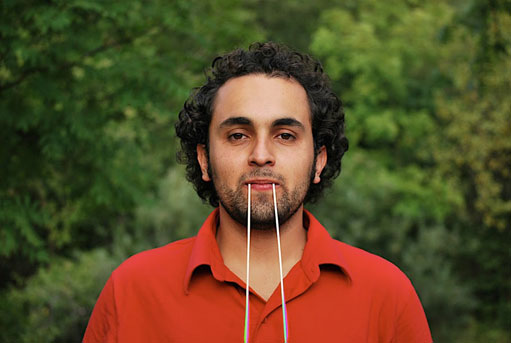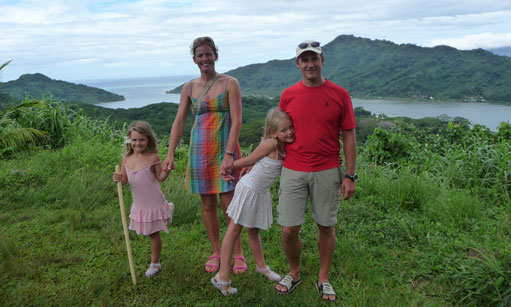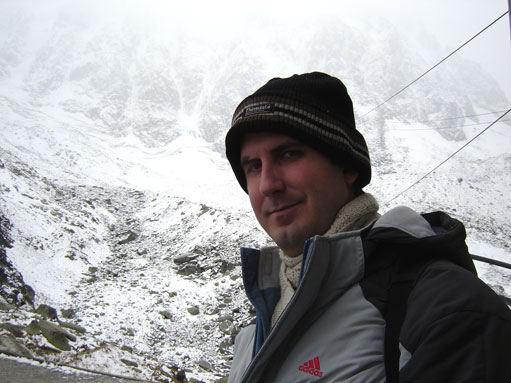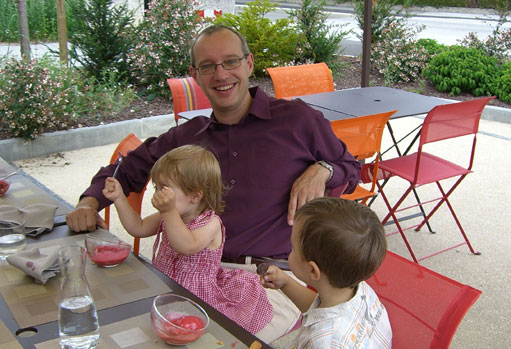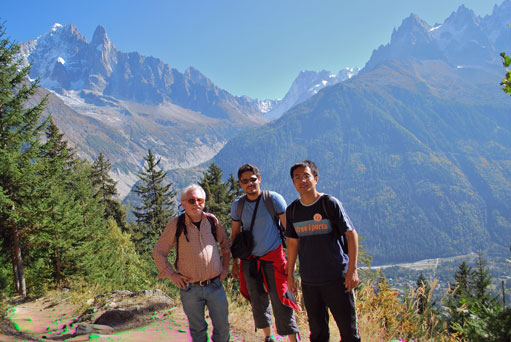Profiles
Pauline Gagnon
When exactly did her interest in science start, Pauline Gagnon cannot say. "I always wanted to know what matter was made of,” she explains. Inspired by Marie Curie, her first choice was chemistry. No wonder that nine-year-old Pauline's dearest wish for Christmas was a chemistry kit. Unfortunately it said "Recommended for ages 10 and older" on the box. So her parents opted for a microscope instead and she had to wait another year to start chemistry experiments. "The best experiment was the one producing rotten egg smell - the whole family could tell it had been successful,” she recalls. She kept the mortar and pestle from that chemistry kit and uses it today to ground spices.
Profile |
Teresa Fonseca Martin
Has cooking something to do with physics? Sure! There is a difference, if the meal is cooked in a clay pot or in a metal pot. In a clay pot it will take longer to heat the food up, but then the temperature will stay for a long time, even thought the oven is turned off. On the contrary the metal pot will heat up much faster, but as soon the pot is removed from the oven, the heat is nearly gone.
Profile |
Martin Rybar
There is usually a defining moment, or event, that leads a person to science. For 10 year old Martin Rybar, it was the moment when he found the chemistry laboratory kit from his uncle in his parents' house. Curiosity has always been the main driving force in science – and Martin was no exception.
Profile |
Genevieve Steele
Eight-year-old Genevieve Steele was a little girl who knew what she wanted. And what she wanted was to play the harp. As soon as she first spotted one, while clog dancing at Sidmouth Folk Festival on England's south coast, she pretty much didn't let it out of her sight.
Profile |
Regina Kwee
Year 2000, which was declared as the “year of physics” in Germany, was the very year, when Regina Kwee finished high school with the German Abitur in Berlin. She and a friend visited the particle physics exhibition “Trip to the Big Bang” and this may well have triggered her interest for this field. She was very much interested in physics, although she had an humanistic education with focus on ancient Greek and Latin.
Profile |
Takanori Kono
There are many paths into science and one that might have played a key role for Takanori Kono could be LEGO bricks. Maybe it is the segmented approach learned from playing with those bricks that helped him later on tackle computer programming. It is easier to break down any problem into smaller chunks, seeing how it is put together as though it were made from basic building blocks.
Profile |
Valeria Perez Reale
Physicists are elderly men, wearing white lab coats and looking a bit like Einstein - that was the way most kids draw physicists before their visit to CERN. But, thanks to Valeria Perez Reale and her colleagues who participated in the 'Draw me a physicist' program, the way these kids see scientists changed forever. “I was happy to be interviewed and sketched by 8 years old from the Geneva and Pays de Gex area, who had never visited CERN before,” Valeria says. She adds, “It fills me with satisfaction to see young children interested in science and the pleasure when they learn new things that change the way they see their universe around them.”
Profile |
Frederick Luehring
“That's one small step for man, one giant leap for mankind,” we all remember Neil Armstrong saying while taking his first steps on the moon. As so many, Fred Luehring was glued to the television set that 21st of June, 1969, but to him this event meant much more than to most.
Profile |
Kathy Copic
Maybe it snuck into her subconscious while she was wandering the geometrically perfect street plan of her native Euclid (yes, named after the famous 'Father of Geometry') near Cleveland, Ohio. Maybe it rubbed off on her as she discovered the intricacies of risk and probability while dealing smoky late night blackjack for her father's casino equipment hire business. Or maybe it was just pure chance. But one way or another, mathematics is in Kathy Copic's bones.
Profile |
Elvar Karl Bjarkason
“I've always been interested in science, and questions about the universe and what makes it tick.” says Elvar Bjarkason. Like many physicists he began by being interested in general science, so still in primary school he liked mathematics, chemistry and physics, while learning about the structure of atoms. But that was just a start.
Profile |
Bengt Lund-Jensen
“In Sweden you can go out dancing in the summertime, where they play popular music but adapted for dancing,” says Stockholm native Bengt Lund-Jensen. Nine years ago, he decided to re-visit the dances of his undergrad days in pursuit of fitness, and now he spends his summers stepping out with other Scandinavians in the midnight twilight.
Profile |
Pascal Pralavorio
“In a sense, life is never as you've foreseen it to be. This is also true for natural laws, and that's why I like to be a physicist so much,” Pascal Pralavorio says as he explains what makes discovery so interesting for him.
Profile |
Trevor Vickey
Going into his new position with Johannesburg's University of the Witwatersrand ('Wits' for short), Trevor Vickey sees his brief as “a sort of linear combination between a professorship and a Peace Corps assignment”. The tenure-track Senior Lecturer post will take him to a brand new continent, but, he says, he made the original application “on a whim” after five years as an ATLAS postdoc.
Profile |
Mahsana Ahsan
For most particle physicists, memories of the dim and distant past when they couldn't yet use a computer are distinctly fuzzy. For Mahsana Ahsan, though, they're a little fresher: “I didn't have a chance to use computers during my studies due to lack of computer labs,” she explains. “When I first went to the US, I was only able to type an email very slowly.”
Profile |
Lucie de Nooij
“I‘m very outgoing,”says Lucie de Nooij, without hesitation.“That may be a Dutch thing, but it‘s also very much me.”
Profile |
Nitesh Soni
Although he was a self-professed ‘bookworm’ up until his PhD days at Panjab University, Nitesh Soni somehow never expected to become a research scientist. “I was actually preparing for the Indian Administrative Services exam,” he recalls, an essential step on the path to becoming a Police Commissioner or Deputy Commissioner. “So I just joined particle physics research for a second option. But then after four months, my supervisor sent me to Japan, which changed my life.”
Profile |
Rachid Mazini
Rachid Mazini grew up in Casablanca, Morocco. Although he’s now a big fan of rugged terrain, he spent his youth as a “city boy” with holidays on the Atlantic shoreline. It wasn’t until he started university in Marrakech that he began to explore the mountains – the Atlas range, in fact.
Profile |
Jean-Baptiste Blanchard
If you call Jean-Baptiste Blanchard by his full first name, try it the French way and drop the ‘p’. But he generally goes by JB.
Profile |
Jim Degenhardt
As he munches on an all-American breakfast – fresh juice and a bagel hand-delivered by a friend from New York – Jim Degenhardt is the first to admit he’s not a morning person. It’s the aftermath of the 9 a.m. Run Meeting, a daily appointment for Jim as co-run coordinator of the TRT, but the NY-themed sustenance seems to be doing the trick.
Profile |
Rolf Seuster
For Rolf Seuster, there’s no place like Victoria, Canada. Located on Vancouver Island, about 90 km south of this year’s Winter Olympics, Rolf believes it’s one of the nicest places in the country. “It’s the size of Switzerland, and there’s maybe half a million people on the whole island,” he says.
Profile |
Germán Carrillo
It’s hardly a stretch of the imagination to think of ATLAS and CMS as siblings: competing, trying to get ahead, but ultimately friendly and supportive of each other. But for Germán Carrillo, the analogy moves over into the literal, because while he studies for a PhD on ATLAS, older brother Camillo is a six-year CMS devotee.
Profile |
François Butin
When the time came for François Butin to do his military service for France, he wasn’t interested in the armed forces. Instead, he chose to become a “cooperant”, working for a longer period in research or engineering. “In the old days, if you wanted to do your military service in an intelligent way, that was one of the good opportunities,” says François.
Profile |
Attila Krasznahorkay
Attila Krasznahorkay has physics in his blood, the son of a nuclear physicist and a physics and math teacher. He was also introduced to the traveling life style at an early age, moving from his Hungarian homeland to Groningen in the Netherlands at eight years old when his father began work in the city’s university. His young, agile brain managed to pick up the Dutch language, but now, although he recalls the experience of being fluent at age nine, he struggles to think of words.
Profile |
Thorsten Wengler
Thorsten Wengler can still remember exactly where he was when the Berlin wall fell in November 1989: on night guard, sitting atop a pile of arms and ammunition in the woods outside of Potsdam, Germany, alongside three of his fellow East German soldiers.
Profile |
Tapas Sarangi
If a chance meeting hadn’t led Tapas Sarangi to a PhD in Japan, things could have been very different: “I would probably have been in the Indian Navy as a commissioned officer!” he admits.
Profile |
Pagination
- Previous page
- Current page 1
- Page 2
- Page 3
- Page 4
- Next page

